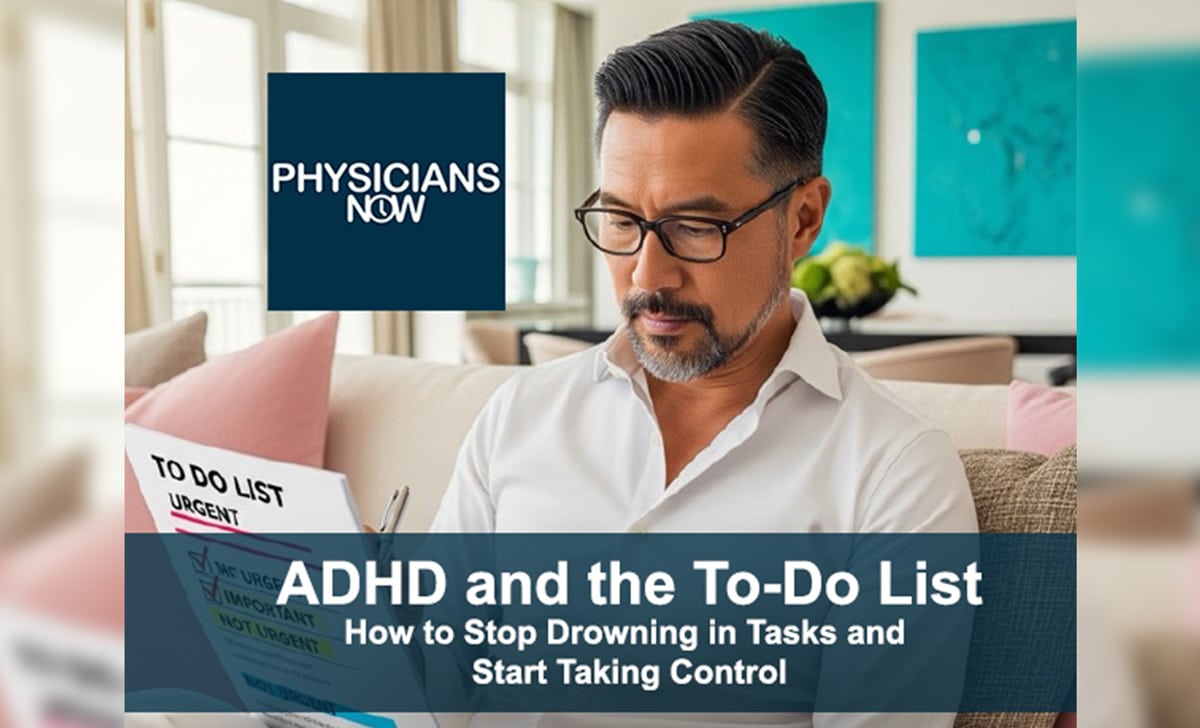
ADHD and the To-Do List: How to Stop Drowning in Tasks and Start Taking Control
As a physician, I often hear from my patients with ADHD about the challenges of managing a to-do list. It can feel overwhelming, like a never-ending mountain of tasks. But I’m here to tell you that it is possible to conquer your to-do list and feel more in control of your day. It just takes a few strategic adjustments and a healthy dose of self-compassion.
Here are some actionable steps you can take to tackle your to-do list, designed with your ADHD brain in mind:
1. The Brain Dump: Get It All Out
Before you can organize, you need to externalize. Grab a notebook or open a digital document and simply write down everything that’s on your mind. Don’t filter, don’t judge, just list every single task, big or small, that you can think of. This helps to clear your mental clutter and gives you a complete picture of what you’re facing.
2. Prioritize ruthlessly: The Urgent vs. Important Matrix
Once you have your comprehensive list, it’s time to prioritize. A helpful framework is the Urgent/Important matrix:
• Urgent & Important: These are your top priorities. Tackle these first.
• Important, Not Urgent: Schedule these tasks. They contribute to your long-term goals.
• Urgent, Not Important: Delegate or minimize these. They can often be distractions.
• Not Urgent, Not Important: Eliminate these!
Be honest with yourself about what truly needs to be done and what can wait, be delegated, or even removed entirely.
3. Break It Down: The Power of Micro-Tasks
One of the biggest hurdles for ADHD brains is the feeling of being overwhelmed by large tasks. Break down each major task into smaller, more manageable steps. For example, instead of “Clean the house,” your list might say:
• “Put away dishes”
• “Wipe down kitchen counters”
• “Vacuum living room”
This makes the task less daunting and provides a sense of accomplishment with each completed step, building momentum.
4. Time Blocking & The Pomodoro Technique
Dedicate specific blocks of time to specific tasks. This helps to create structure and reduce decision fatigue. For tasks that require sustained focus, I highly recommend the Pomodoro Technique:
• Set a timer for 25 minutes and work on one task.
• When the timer goes off, take a 5-minute break.
• After four “Pomodoros,” take a longer break (15-30 minutes).
This technique leverages your brain’s natural ability to hyperfocus for short bursts and prevents burnout.
5. Externalize and Visualize: Whiteboards, Apps, and Alarms
Don’t rely solely on your memory. Use external tools to keep your tasks visible and accessible. Whiteboards, digital to-do list on your phone, and setting alarms for reminders can be incredibly effective. Seeing your progress visually can be a powerful motivator.
6. Reward Yourself (Responsibly!)
When you complete a task, especially a challenging one, acknowledge your effort! A small, immediate reward can reinforce positive habits. This could be anything from a 5-minute break to listen to music, a quick walk, or a few minutes on social media (set a timer for this!).
7. Be Kind to Yourself: Flexibility is Key
Understand that some days will be more challenging than others. If you don’t get everything done, that’s okay. The goal isn’t perfection, it’s progress. Adjust your list as needed, learn from what works and what doesn’t, and remember that managing ADHD is an ongoing journey. Celebrate your small victories, and don’t let setbacks derail your overall progress.
By implementing these strategies, you can transform your relationship with your to-do list, reduce overwhelm, and experience a greater sense of accomplishment and control in your daily life.



